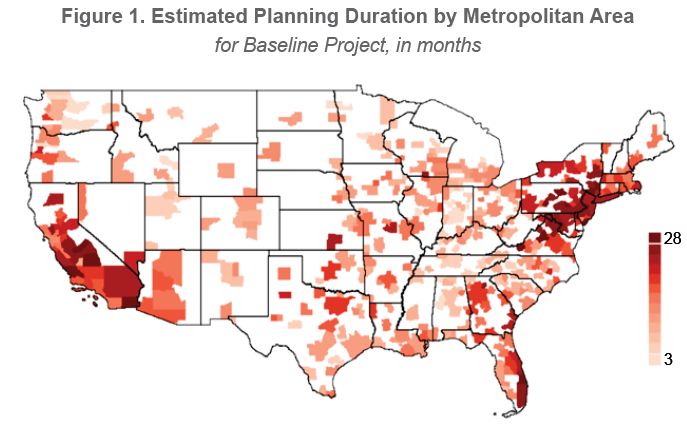Stephen Oliner, a UCLA professor doing research for the Federal Reserve Board, has made the first-ever estimate of planning times for commercial construction across the United States. Drawing upon 82,000 projects nationwide, he found that the average planning time nationally is about 17 months. But it’s a long longer in some places and shorter in others.
Based on Oliner’s map, it appears that Virginia has a lot more in common with the blue states in California and the Northeast than “red” flyover country when it comes to planning regulation. Indeed, the state looks like an extension of the Washington-New York-Boston megalopolis. (Hat tip: Timothy Wise.)
Bacon’s bottom line: What does this mean for development and re-development in Virginia? If, as I believe, population growth and real estate investment is gravitating back toward the urban core, longer planning times slow the market’s adaptation to changing consumer preferences and economic conditions. As documented in “The Great Inversion and the Future of the American City,” in Houston, which has no zoning and minimal red tape, developers can turn on a dime in response to changing market conditions. The zoning restrictions and other red tape we have in Virginia (a) makes real estate more expensive, and (b) slows the evolution of human settlement patterns in response to market demand toward more compact, walkable communities. Not good.
— JAB



